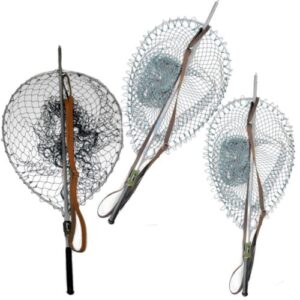
Good morning from a slightly cooler Foxford. I managed to get my boat of the Lough just in time. Water levels rose a lot over last weekend and had I left it another day Id have been in trouble. Anyway, its home and safe for another winter. Now it’s time to start tidying the fishing gear. It’s very normal to come to the end of the season throw it in a corner and say that’s it until next year and we have all done it. The problems start when we put the gear away hurriedly and without thought and care. Some of us are not too bad and some of us are total disasters. Every year we see a rod and reel brought into the shop that has been “abandoned”in the shed. The dust is caked everywhere, the eyes of the rod are rusted or corroded and possibly twisted out of line, the reel barely rotates and the line resembles a strimmer that that went out of control. The proud owner really has not a clue that the mess presented has been caused by his/her neglect and in most cases don’t even realise that what they have presented is a mess..
Here are a few simple little tasks that will extend the life of your fishing gear and minimise the chances of disaster at the start of next season.

Rods: Remove the reel. If the rod has been used in saltwater give it a rinse under a tap or use a hose, shake it dry. Even if you have not used your rod in salt water it’s no harm to give it a rinse, sand and mud are abrasive and will cause the joints to wear which also shorten its life span. Leave the rod somewhere airy to dry. Make sure it is fully dry, especially the cork handle. Failure to do this will lead to other problems. When dry, wipe the rod down with a clean cloth. This is a good time to thoroughly check all the eyes/guides for any sign of wear or damage. If you find any signs of wear especially on the tip eye now is the time to have it replaced. If you have a rod bag and tube, put the rod into them. You would not believe how many rods get broke each year because they were not protected by a tube. If you don’t have the original tube your local tackle dealer most likely has a surplus of tubes he is trying to give away or alternatively you can easily make a tube large enough to take several rods from a piece of waste pipe
 Reels: Slightly more complex than the rod Your reels need some TLC. Firstly, remove the line. It’s not worth trying to keep it, chances are it will be rotten by the start of the new season and you will just risk losing baits and fish. If you leave the line on the spool, it will very likely cause corrosion. Next you need to clean the reel. Nothing major, a wipe with a cloth and take as much dirt, grit or sand of it as you can. A little drop of oil on all the moving parts especially the bail spring always helps and reels love oil. If you are anyway useful with a screwdriver you could remove the side plate and re-grease the reel. If this is a step to far just visit your friendly local tackle dealer who now that the season is over will have loads of spare time for these types of jobs.
Reels: Slightly more complex than the rod Your reels need some TLC. Firstly, remove the line. It’s not worth trying to keep it, chances are it will be rotten by the start of the new season and you will just risk losing baits and fish. If you leave the line on the spool, it will very likely cause corrosion. Next you need to clean the reel. Nothing major, a wipe with a cloth and take as much dirt, grit or sand of it as you can. A little drop of oil on all the moving parts especially the bail spring always helps and reels love oil. If you are anyway useful with a screwdriver you could remove the side plate and re-grease the reel. If this is a step to far just visit your friendly local tackle dealer who now that the season is over will have loads of spare time for these types of jobs.
Lines: Dispose of any old monofilament. Braid tends to have a longer lifespan and I would chance it for a couple of seasons. Do remove it from the reel spool by respooling it onto an empty line spool or something similar. Store it in a dark place away from sunlight and excessive heat. Fly lines should be taken off their spools and hung in large hanks, this will avoid memory developing. Always label the lines with their details, profile, weight, and density (e.g. WF7F for Weight Forward #7 Floating). You can trust me, if you don’t label them by next spring, you will wonder what they are (Been there done that!)
Waterproofs: The next most important things to look at are your fishing jacket/coat and waders. Most of us are by now wearing some sort of breathable waterproof (debatable) jacket. These fine garments do not come cheap and are worth looking after. Mud, sand and dirt in general are the enemy and will destroy a breathable jacket very quickly.
Check every pocket and make sure they are empty (now that you’ve found it return your salmon Licence 😊 )
At very least wipe the jacket down with a damp cloth. If it is heavily soiled check the manufactures instructions and give it a wash. Normally a cold wash. Dry it well and reproof it. Reproofing is the secret to staying dry in a breathable garment. We have a very good reproofer and its not very expensive. I have no problem recommending it and it’s easy to use.https://themoy.com/product/barvic-of-ballyclare-water-repellent-spray/ Once this has been done put the jacket on a hanger and store it out of the sun and where it will not gather dust.
Waders: Waders are difficult to keep, they have a life span and we have to accept that. The best way to prolong this lifespan is to treat them with care. Once the season is over give them a hose down and dry them well. Inspect for signs of damage or wear and repair any leaks found. Hang them up somewhere dry and airy, again out of sunlight is best. I do not recommend a garage or garden shed, I have had several customers over the years who have left their waders in the garage only to find a mouse or worse has eaten the neoprene socks. Wading boots should be washed and all mud and dirt removed from the soles, dry them well and store them in a bag.

Landing net: Often forgotten the landing net will benefit from a bit of TLC as well. Although we normally clean the net bag by plunging it in the water after netting a fish it can still have dried fish slime and blood on it. Wash the net bag well and dry it thoroughly. Check the shaft for damage, little dents and marks are normal but can stop the shaft sliding freely. A light rub with emery paper can sort a lot of these blemishes. Put some oil on the block that the shaft slides through and along the shaft itself. Hang the net up and again remember our little rodent friends Will if they get a chance have a nibble.
Flies: I think the next most important task is to tidy and winterise the fly boxes. Start by discarding anything that looks damaged. There’s always a less fortunate kid who will love to get them. After this there are two things we need to watch out for. Hooks rusting and moths or other creatures attacking the flies. Both are easy to avoid but if we are not diligent, they can catch us. A lot of fly boxes have foam which the fly is either stuck in or it sits into slits in the foam. During the season as you use flies and put them back in the box or perhaps open the box on a wet day moisture is trapped here and over the winter it rusts the hooks. Have a look at one of your boxes and I’ll bet that already there’s a rust mark somewhere. Moths love fly boxes and again most of us have had the experience of opening a box to find a well eaten selection that fall to bits when touched. Plastic bags are the answer. Take the flies out of their boxes and dry them, after they are dry put them in grip seal bags. You can then leave the bags in the box and look forward to sorting them neatly at the start of next season.
I’m sure as you go you will find other important tasks that can be added but if you manage to do a few of the ones I’ve mentioned it will be a good start for next season. Back next Friday with something more fishy.

